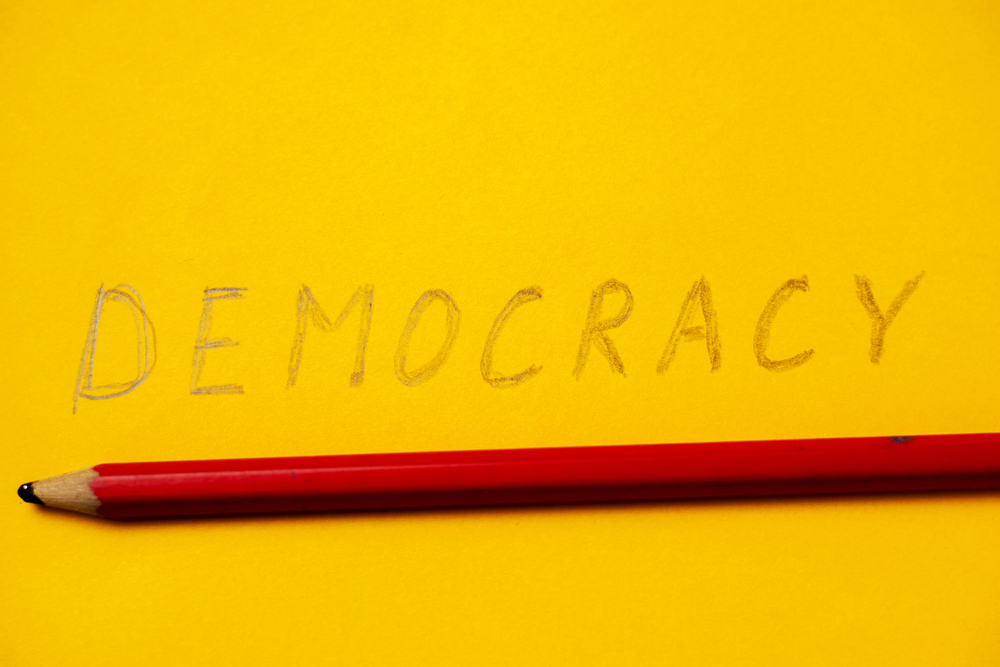If you haven’t read Part I of the series, please click HERE.
In this installment we will describe some of the key dynamics that allowed the Houthi insurgency to defeat the government of the ROY. Understanding this aspect of the recent history of Yemen is critical to evaluating the danger of becoming entangled in a very dangerous situation in a difficult to nearly impossible Counter-Insurgency (COIN) environment.
Dynamics of the Houthi Insurgency
Despite a reputation of being both poor and uneducated, the Houthi rebellion has done an excellent job of capitalizing on opportunities to increase the momentum of their insurgency. The Houthis hold strong advantages in terms of demographics, geography, and the general incompetence of the central ROY government that enabled them to accurately time their strategic maneuvers.
Of the seven recognized dynamics of insurgencies, the Houthi capitalized on three with a high degree of efficiency: ideology, environment and geography, and phasing and timing. Elements of the remaining dynamics played a crucial role in supporting these and any analysis of the thus far success of the Houthis is bound to include elements of objective, external support, organizational and operational patterns, and leadership.
Ideology
The Ideology of the Zaidi cleric Hussein Badreddin al-Houthi, who spawned the insurgency in 2004, centered on grievances common to all Yeminis. al-Houthi’s message to the insurgency was simple: universal religious freedom, intolerance of government corruption, and Yemeni independence from regional and international powers of Saudi Arabia and the United States. Al-Houthi and his brother Abdul Malik Al Houthi who succeeded him after his death, were very careful to maintain their support for a democratic republic system of government and even maintained that women should play a larger role in government and education.
This allowed the Houthis to access the tacit and active support of the vast majority of the Zaidi population as well as non-Zaidi political progressives across the country. Al Houthi was also careful to frame the insurgency as a locally focused movement allowing local power players enough room to ally with Houthi without abdicating political control of their villages or areas.
The Houthis borrowed many aspects of the successful Iranian Revolution with the notable exception of not proposing a cleric led government. This was a political maneuver designed to ensure that Zaidis would not be ruled by other religious sects post insurgency. Hussein Al-Bukhari, purportedly a Houthi insider, stated “we cannot apply this system in Yemen because the followers of the Shafi doctrine are bigger in number than the Zaydis.”, which indicates a high degree of political calculation and flexibility within the Houthi movement.
Their flag very closely mimics slogans used by Shia religious groups across the world, particularly in Iran: “God is Great, Death to America, Death to Israel, Curse the Jews, Victory to Islam” is emblazoned on their insurgent flag. Houthi political leaders have attempted to explain that “death” in this context is a reference to political power and not to be taken literally. This is very similar to Iranian political leaders’ explanations of similar rhetoric.
From the beginning, the Houthis have battled with the Sunni tribes in the south and by extension Sunni VEOs such as AQAP and now ISIL. This is a critical component of the Houthi ideology and accomplishes two things: reinforces the Houthi position that Yemen does not need external support in fighting terrorism and allows the Houthis to tie Saudi Arabia to the sponsorship of Sunni terrorism. Both are critical to the Houthis maintaining popular support.
Typical of most insurgencies, the Houthis broadly accepted ideology is the most powerful of their dynamics and is what enables them to access the human population needed to continue their expansion. Al Houthi very carefully crafted an ideology based on the most universal grievances available to expand his reach and maintained consistent messaging that kept the momentum of the Much of the Houthi ideology is also acceptable across the world, which may have been a factor in preventing significant outside interference from actors such as the UN or the United States.
In short, the ideology maximized popular support and minimized the risk of external interference. Without a well-designed ideology and effective messaging, no amount of geographical or demographic advantage would have allowed the Houthis to succeed in overthrowing the ROY.
Environment and Geography
The outset of the 2004 insurgency was heavily focused on Guerilla fighting in the mountainous terrain of northern Yemen and south western Saudi Arabia. This geographic advantage is common to many insurgencies throughout the history of the world. Mountainous terrain is extremely difficult and expensive for invading armies and governments to fight and relatively simple and for local inhabitants to defend efficiently. The ROY, being a young and unified country, never had firm central government control over these outlying areas and it became relatively simple for Houthis to either prevent their entry into these areas or expel them with harassing attacks. This is not dissimilar to the efforts of the central government of Afghanistan to bring the rural areas of Afghanistan under the control of the central government.
Constant efforts to clear and hold the same small mountainous regions continuously from 2004-2010 both demoralized the military and police and exacted a heavy cost in terms of lives, equipment, and money. This lead to a negotiated ceasefire in 2010 that can only be viewed as a victory for the Houthis and a temporary reprieve for the ROY. Today, with the Houthis in control of the capital city of Sanaa, the mountainous regions remain a near untouchable stronghold for Houthi fighters and equipment.
The drawback to the Houthis use of this terrain is that northern Yemen is bordered by the country of Saudi Arabia, who is at odds with the Shia Zaidis who have inhabitants in the mountainous regions that spans the border between the two countries. This in effect put the Houthis in a limited war on two fronts, though fortunately for the Houthis, KSA had neither the skill or experience to effectively deter them.
After the Houthi takeover of the ROY, the subsequent Saudi invasion deliberately avoided the mountainous regions to the north due to their historical inability to effectively target Houthis in this terrain. The mountainous geography is likely the Houthi’s biggest tactical and strategic advantage, as every regional player understands the Houthis are capable of withdrawing into the mountains and returning to their effective methods of guerilla warfare.
Phasing and Timing
Phasing and timing was the essential component in tying together the Houthi ideology with their guerilla operations. Little is known about the latent and incipient phase of the Houthi insurgency in the period before the 2004 insurgency. In truth this phase was most likely abbreviated as the Zaidi population was the historical political power in the north of Yemen and represented 45% of the total population. What is known is that al Houthi was very careful about when, where, and to what degree he began guerilla warfare operations. From 2004 until 2010 the Houthis remained almost entirely in their mountainous homeland, repeatedly beating back ROY attempts to bring these areas under control.
Six continuous years of guerilla warfare in these regions drained the ROY coffers and military morale. During this period, the Houthis began developing popular support in the low lands to the south, including the capital city of Sanaa. The Arab Spring protests offered an opportunity in 2011 to fuel further discontent in Sanaa and across north Yemen; tens of thousands of protestors lined the streets to oust President Hadi. ROY officials claim that during this time the Houthis were using these protests to move weapons and supplies into the city in preparation for what would be termed a war of movement in insurgency doctrine. The ROY and KSA claim that from 2011 to 2014, the Houthis staged acts of sabotage against the governments of both countries and committed numerous assassinations to intimidate military, police, and political leaders before their eventual push to overthrow the ROY.
These tactics succeeded and many officials either resigned of fled the country. The final precipitating event was the ROY’s loan agreement with the IMF that doubled gas prices and destroyed any remaining faith in the ROYs ability to manage the economy. The Houthis immediately capitalized on this opportunity and seized political offices and military checkpoints around Sanaa with virtually no resistance from the ROY.
What can be noted about the Houthis use of phasing and timing is their fluidity between the three phases of insurgency and their simultaneous use of differing phases across the expanse of their insurgency. The mountains were without question focused more heavily on guerilla warfare, while the more populated cities like Sanaa spent relatively little time locked in guerilla warfare or overt military action. The Houthis craftily utilized the strengths of each geographic area and applied tactics from each phase of insurgency where most appropriate. This created an insurgency strategy that was not chronologically oriented, but nonetheless extremely effective.
Unconventional Warfare Activities
The most critical of all Houthi Unconventional Warfare (UW) activities to date has been their very successful guerilla warfare strategy. Guerilla warfare in and of itself would not have been enough to help the Houthis take Sanaa, however, in its absence it would be have been far costlier or outright impossible to overthrow the ROY.
The six-year guerilla struggle in the mountains of northern Yemen played several pivotal roles for the insurgency. It exacted a heavy financial and human toll of the ROY as well as a heavy psychological toll on its military and police. It spread ROY forces out across the country and forcing them to tackle two problems simultaneously: the insurgency in the north and the Sunni VEOS such as AQAP in the south.
As the ROY coffers were depleted, corruption and taxation rose concomitantly, giving more credibility to the Houthi ideology and messaging. The guerillas also prevented ROY access to the Houthi bastion in the mountains creating areas for concentrating supplies, men, and planning with minimal concern for disruption.
The guerrilla effort was the necessary component for the synergy between other important UW activities performed by the Houthis. Chief among these subordinate components are sabotage and subversion to include assassinations. Houthis organized riots and protests skillfully timed with the Arab Spring protests and bad economic conditions. They also sabotaged ROY military and police outposts and blocked roads, compromising their ability to respond to crises.
Between 2011 and 2014, Houthis increased their lethal psychological operations by staging assassinations of ROY political and military figures, setting the stage for mass resignations in the war of movement phase. These combined with the guerilla operations in the north gave the appearance that the Houthis had a nearly unlimited ability to conduct operations in the contentious areas with complete access to ROY forces and leaders.
Logistics
Logistics is by far the least understood and most controversial aspect of the Houthi insurgency. US intelligence operations in the region have been primarily focused on targeting AQAP in southern Yemen, while journalism in Yemen has been weak relative to other conflicts around the world. Much of the controversy revolves around whether or not the Shia regional superpower Iran has provided significant external support the Houthis. The US and Saudi claim that Iran has provided significant support to the Houthis, including ground to air weapons used to down a Saudi AH-64 Apache helicopter.
The Iranians and Houthis claim that while their interests to align in many regards, the Houthi insurgency is almost entirely organic to Yemen. Journalists have been unable to uncover evidence that Iran has provided significant support to the Houthis, claiming that US and Saudi reports are largely unsubstantiated and question the veracity and motives behind their proclamations. What is clear is that after the Saudi invasion and subsequent blockade of Yemen it is highly unlikely that external support to Yemen is flowing freely.
What is known with relative certainty; Yemen is home to 40-60 million weapons and an enormous black market capable of fueling not only a Yemeni insurgency, but also conflict across the entire region. Yemen’s many previous conflicts, insurgencies, and civil wars have provided the Houthis with more than enough opportunity to gain experience, train cadres, and acquire the firepower required to conduct their overt military operations. Battlefield recovery and ROY Army defections and corrupt generals selling arms for profit have also served to bolster the insurgencies military capability. It is rumored that much of the US foreign military aid to Yemen has found its way into Houthi control. Middle eastern reporter Gareth Porter stated the following:
“According to Pentagon documents acquired under the Freedom of Information Act by Joseph Trevithick, the Defense Department had delivered about $500 million in military hardware to the Yemeni military from 2006 on. The gusher of new US arms included Russian-made helicopters, more than 100 Humvees with the latest armor packages, 100s of pickup trucks, rocket propelled grenades, advanced radios, night vision goggles and millions of rounds of ammunition.
A significant part of that weaponry and equipment was scooped up by Houthi fighters on their way into Sanaa and has been visible in the months since then. When the Houthis advanced into Aden 1 April, residents reported seeing four tanks and three armored vehicles as well as Rocket propelled grenades. On 29 March, after the Saudi bombing campaign had begun, the Houthis were reported to have had control of the Yemeni Air Force’s 16 fighter planes, of which eleven had been destroyed by the bombing.”
While the least understood aspect of the insurgency, logistics might actually be the easiest component of the movement. A combination of a rich black market, corrupt generals, army defections, and battlefield recovery provide more than enough opportunities for the Houthis to arm themselves.
The next installment will cover the international involvement in the conflict and the implications that will have for US foreign policy in the near term.
Reprinted with author’s permission.











